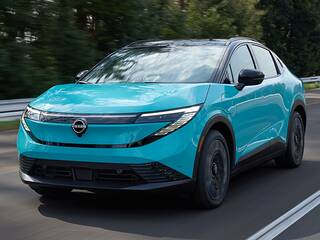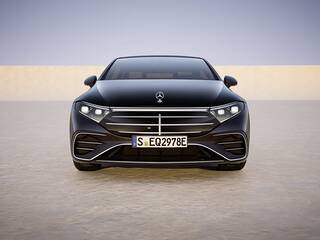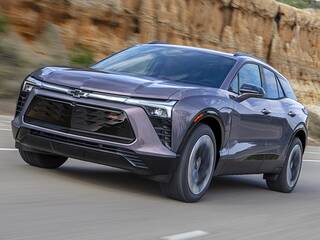2025 Hyundai Santa Fe review: Is this 3-row tweener a Goldilocks SUV?
The reinvented Santa Fe is unusually hard to categorize, and therein lies its greatest strength.

published Feb 28, 2025
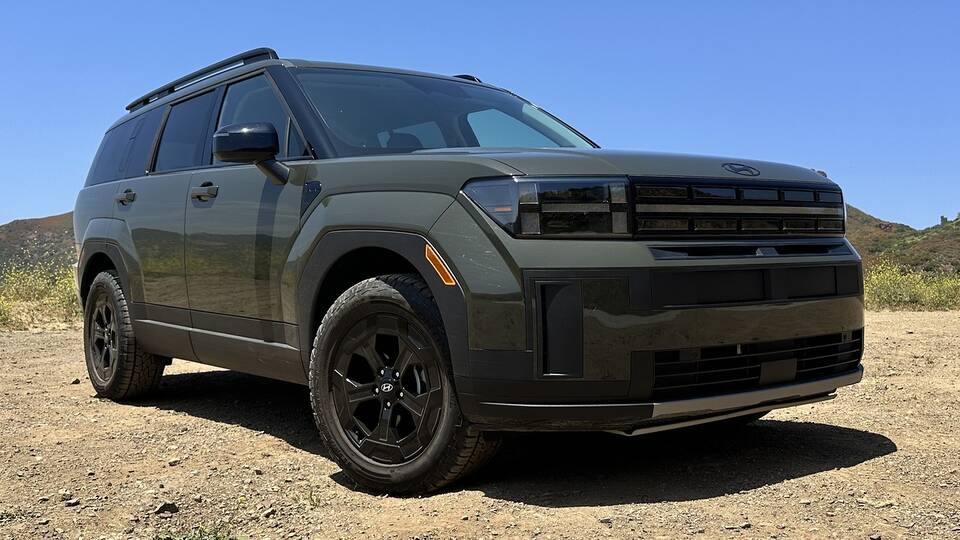
Key Takeaways
- I drove a 2025 Hyundai Santa Fe XRT, which has a suggested retail price of $40,950.
- The off-road-flavored XRT comes standard with all-terrain tires, but otherwise it's just a nicely equipped Santa Fe.
- Neither compact nor midsize, the three-row Santa Fe makes a compelling case for the middle way.
I've always had a hard time calling typical three-row SUVs "midsize" with a straight face, even though that's the convention. Have you driven a Honda Pilot, for example? A Toyota Grand Highlander? These beasts are more akin to family buses than ordinary vehicles — they're only midsize in relation to truck-based behemoths like the Chevy Tahoe.
That means there's an opening, in theory, for smaller three-row SUVs that feel less bloated from behind the wheel and don't take up as much space. Trouble is, these compact models tend to have such cramped third rows that they're nonstarters for most families.
But why not split the difference? Don't go fully compact, but shave off some inches to improve everyday maneuverability — and shave a few grand off the starting price, too.
That's what Hyundai had in mind when it rolled out the redesigned Santa Fe last year. I drove a 2025 Santa Fe XRT to see if Hyundai's tweener three-row SUV has the right stuff to win folks over.
How long is the 2025 Hyundai Santa Fe?
When it comes to vehicle length, a few inches can mean more than you'd think. The difference between a compact SUV and a midsize three-row SUV is roughly 12 to 15 inches, which doesn't seem like a lot until you see that Grand Highlander parked next to a RAV4. In person, it's obvious that you're dealing with different orders of magnitude.
With the Santa Fe, Hyundai's betting that if the gap between compact and midsize is so significant, there must be a niche worth carving out in the middle, both lengthwise and pricewise. Here's how the 2025 Santa Fe stacks up against Hyundai's compact and midsize-three-row SUVs.
2025 Hyundai Santa Fe Length & Price in Context
Vehicle Length Base MSRP 2025 Hyundai Santa Fe 190.2 in $34,200 2025 Hyundai Palisade 196.7 in $36,800 2025 Hyundai Tucson 182.7 in $28,355
In case you're not familiar with Hyundai's SUV lineup, the Palisade is the brand's midsize three-row model, while the Tucson is a two-row compact SUV. As you can see, the Santa Fe finds a middle ground in terms of both length and price, although the Palisade's base price is surprisingly close. There really aren't any other three-row SUVs like it, unless you count its Kia Sorento corporate cousin, more on which below.
How spacious is it?
Three-row SUVs are often judged by whether adults can fit comfortably in the third row, but that misses the point for a lot of shoppers. If you have young kids, as millions of parents do, you're less concerned about maximizing third-row legroom than you are about simply having a couple of extra seatbelts for smaller humans.
Having said that, it'd be nice if adults could squeeze back there in a pinch, right? And that's the flexibility that the Santa Fe's compact-plus third row gives you.
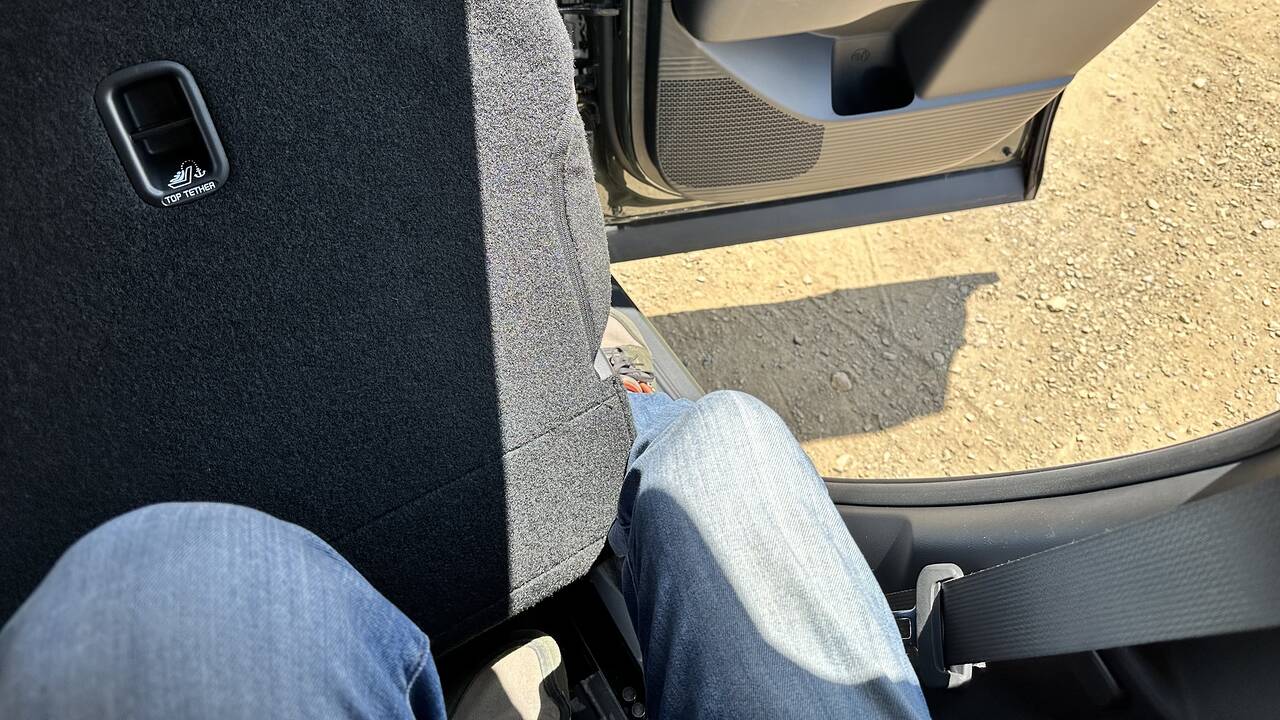
As you can see, my Santa Fe test vehicle's third row didn't leave any legroom to spare for my 6'1" self, and getting in and out required some contortions — that's a narrow opening, even with the sliding second row fully forward.
But could I live with it on a shortish trip? Absolutely. The headroom is fantastic, by the way; it's only the legroom that's lacking. If I could downsize myself to my dimensions at age six, eight, or even 10 or 12, I bet I'd have no complaints.
For many parents, that's all the third-row space they'll need for years to come. So why pay more for a larger vehicle that's relatively unwieldy on the road? That's the Santa Fe's dimensional proposition in a nutshell. Makes sense to me.
How does the Santa Fe drive?
For better or worse, the Santa Fe feels more like a midsize SUV when you're driving it. The Sorento, in contrast, drives like a compact SUV despite being less than an inch shorter than its close relative.
In the Hyundai, you have the sense that you're sitting at the front of a substantial vehicle, which is arguably a comforting feature. Palpable heft at the helm has long been a hallmark of German cars, and there's some of that here, too.
On winding roads, that heft doesn't magically melt away. Remember that I was driving the XRT trim with its all-terrain tires, which provide more than an inch of lift and are definitely not designed to optimize on-road handling. Nonetheless, it's apparent that the Santa Fe's suspension is tuned for comfort, not cornering.
In my book, that's as it should be for a three-row family vehicle. I'm not here to criticize the Santa Fe for compelling me to ease up and lower my corner entry speeds, because the ride over rough surfaces was smooth and supple, and that's what will matter more to most.
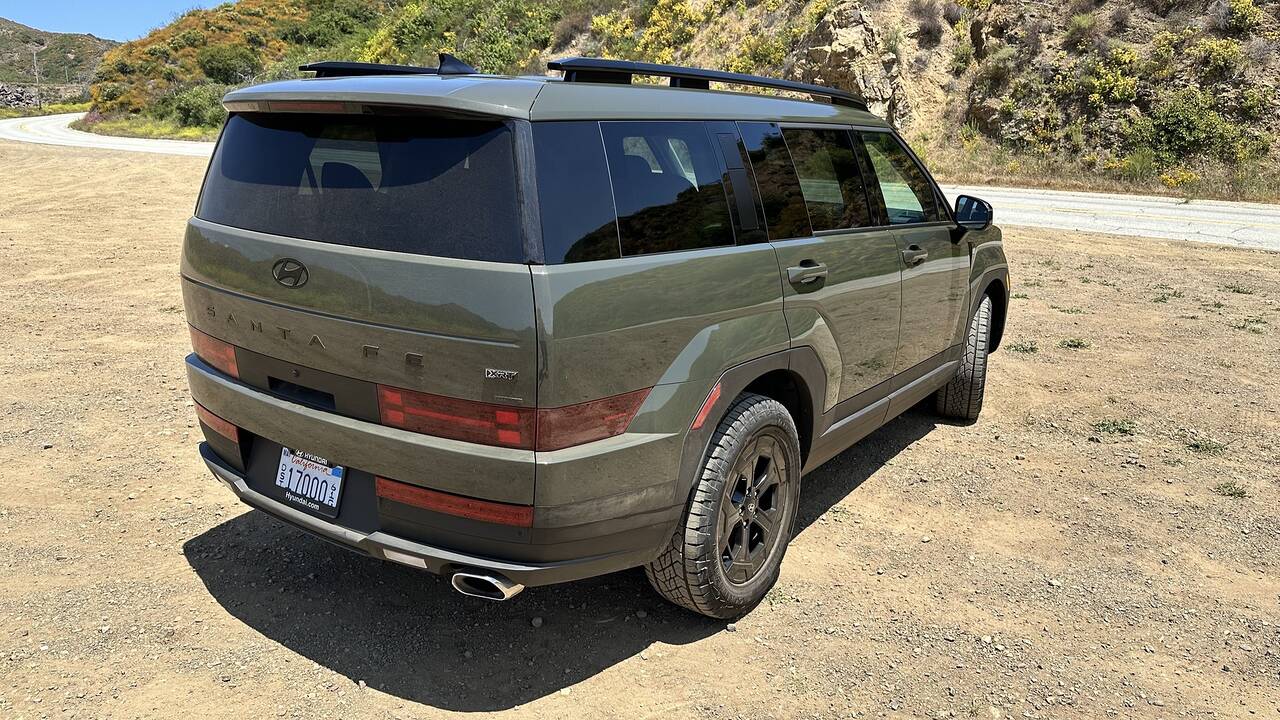
One criticism I'll stand by pertains to the Santa Fe's standard turbocharged 2.5-liter four-cylinder engine, which seems like a win on paper with its robust 277-horsepower output and 6.3-second dash to 60 mph. In the real world, it just doesn't feel that quick, and I also felt some vibrations at higher rpm as the turbo four strained to deliver its best punch.
As usual, there's an explanation if you squint at the data.
The Santa Fe XRT that I drove comes standard with all-wheel drive, so the correct Kia Sorento comp would be the 2.5T AWD version. I've spent a lot of time with that particular Sorento configuration, and it feels downright fast when you put your foot in it. What's holding the Hyundai back?
Well, looking at the weight column, the Santa Fe 2.5T AWD checks in at a rather portly 4,486 pounds, whereas the Sorento tips the scales at 4,045 pounds.
Given that the Santa Fe and Sorento both ride on Hyundai-Kia's N3 platform, I don't know how the former managed to pack on 10 percent more mass. But if you'd rather have the friskier corporate cousin, the Hyundai loses that battle, and it's not as close as the Kia's modest 0.3-second advantage at 60 mph suggests.
How's the tech?
In a word: fantastic. My first thought after plopping down in the driver seat was, "Hyundai's going to sell a bunch of these based on this dashboard alone." Today's shoppers expect the cabin tech to be as slick as their phones, and Hyundai clearly got the memo.
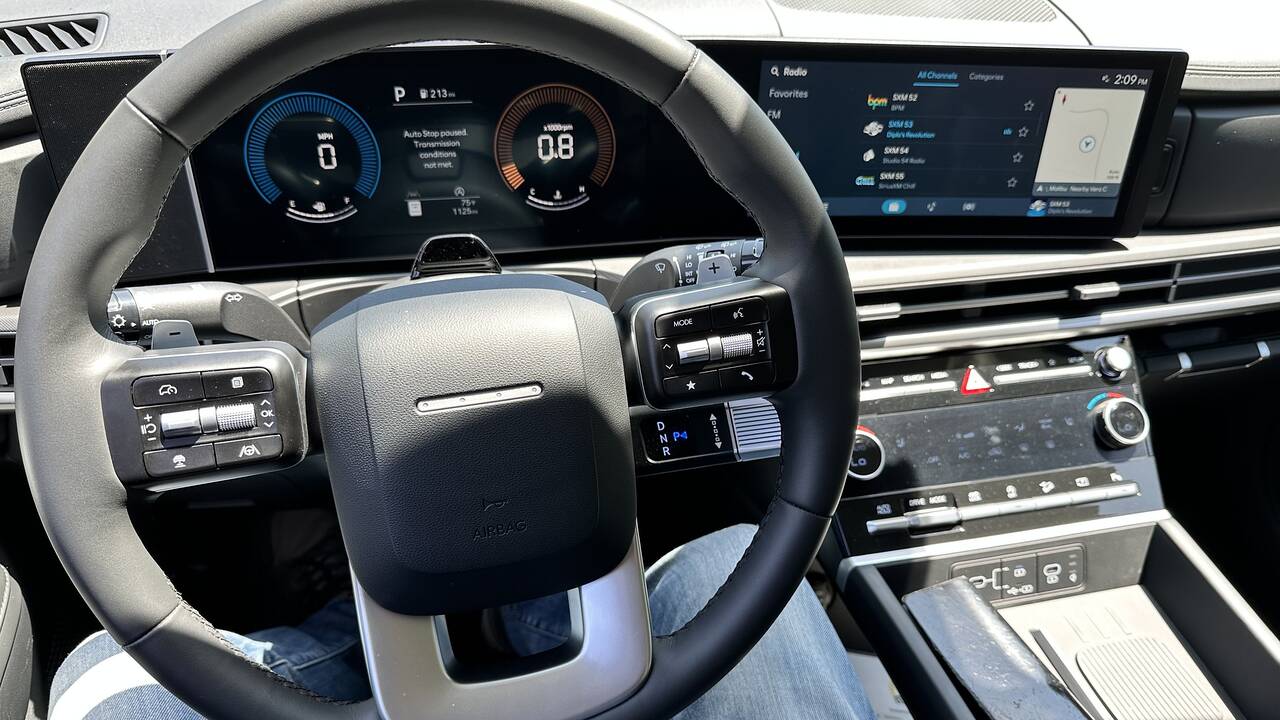
Seriously, what's not to like? The central touchscreen component of the single-frame infotainment module even cants toward the driver, creating a cockpit-like vibe and reducing the reach while driving. The graphics are crisp and snappy on both the touchscreen and the instrument panel, and yes, Apple CarPlay and Android Auto come standard. I even dig the angled climate-control panel below the central screen. Home run, Hyundai — a bunch of rival interiors (looking at you, Honda, Mazda and Toyota) will seem distinctly dated after spending time in this one.
MotorDonkey says
This latest Santa Fe is really good, and I think I like the XRT trim the most, despite what detractors will say about its lack of off-roady modifications beyond the chunky all-terrain tires. The thing about those tires is, they make an already compliant suspension even cushier, thanks to their taller sidewalls. I'd rather have the extra comfort than extra cornering grip that I'd never use.
But regardless of specification, the Santa Fe shows that you don't need "midsize" dimensions to unlock useful three-row functionality. Ironically, the thing I'm least sold on about the Santa Fe is what seemingly everyone's been raving about: the styling. If you're in the apparent majority of humans who like how it looks, you'll probably be sold on the rest of it, too. Bigger than the compacts but smaller than the usual three-row suspects, this Hyundai ends up feeling just right. ⛐ md

by Josh Sadlier
Publisher and Donkey-in-Chief
Josh has been reviewing cars professionally since joining Edmunds.com fresh out of grad school in 2008. Prior to founding MotorDonkey, he spent 15 years shaping Edmunds' expert automotive content in various capacities, starting as an associate editor and ultimately serving as a senior editor before wrapping up with a five-year term as the company's first-ever director of content strategy. Josh is a card-carrying member of the Motor Press Guild and a lifelong car nut who has driven, compared and critiqued thousands of cars in his career. Helping people find their perfect car never gets old—seriously!
 Let's make it official!
Let's make it official!
Be a good donkey and we'll deliver delicious car news straight to your inbox, spam-free forever.
